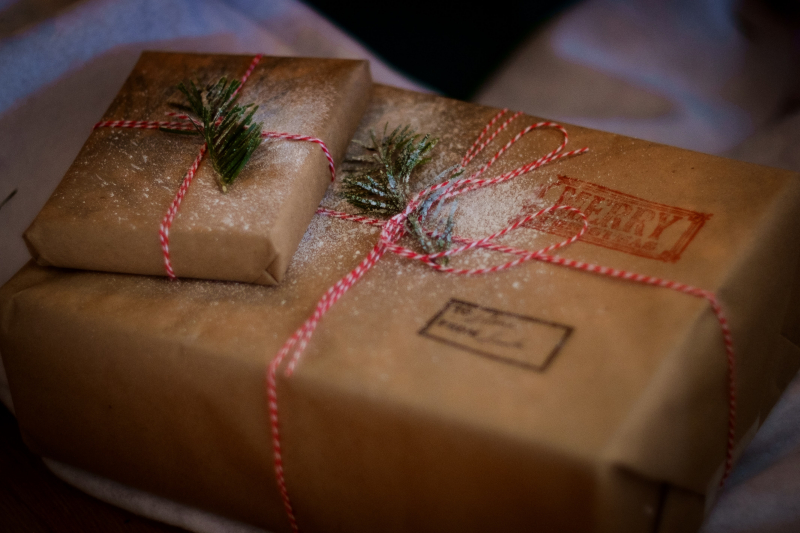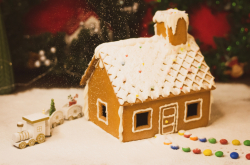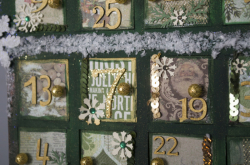First things first. Why is Orthodox Christmas on January 7 and not on December 25? It’s because the Russian Orthodox Church still lives according to the Julian Calendar as the Russian Empire did before the 1917 revolution. One of the first decrees of the new Soviet Government was to change the calendar to the Gregorian one, like in Europe and most of the countries of the world. The Russian Orthodox Church did not obey and kept all important church dates and celebrations in accordance with the old calendar. The difference between the two versions is 13 days, hence Christmas on January 7, also celebrated on this date by Orthodox Christians from Jerusalem, Serbia, Georgia and Poland.
Most people in Russia celebrate Christmas on January 7 just because they did it for most of their lives and do not worry about all this calendar stuff. So the traditional “Merry Christmas and a Happy New Year” sounds more like “Happy New Year and Christmas” in Russia. Thus in Russia the first week of January is usually an official holiday (the period from New Year to Christmas).
Speaking of the New Year. In pre-revolutionary Russia, Christmas was a major winter holiday and (along with Easter) one of the two greatest church holidays. New Year was celebrated only in big cities by aristocratic circles. Generally, New Year was a good occasion to hold a ball, masquerade or a party, as Christmas has always been a family celebration full of religious traditions. The Soviet government, segregating church from the state and forming anti-religious policies, prohibited celebrating Christmas, but the traditions were so strong that practically most families kept celebrating it privately.
Having realized that the young Soviet State needs celebrations joining all families from small kids to grandparents, the government decided to replace Christmas with the New Year celebration, keeping the most distinguishing symbols, such as: bringing family together, gifts for family, friends, relatives and colleagues, Father Frost (as the major character replacing St. Nicolas) and even an evergreen tree with the star on the top (five-pointed and red).
The first official New Year was celebrated in 1936 and since that time the tradition of celebrating New Year practically removed all Christmas traditions. Some were kept by the small groups mainly related to the Church.
The reappearance of Christmas started in the early 1990’s due to the growing interest to religion and traditions. First it was only a religious celebration with church services broadcast on television and orthodox hierarchs explaining what Christmas is.
Christmas Celebration
Russians wouldn’t be Russians if they kept this day strictly religious. Very soon Christmas became a celebration with friends and relatives you did not manage to see at New Year’s. So, for most Russians the New Year is still a family celebration, Christmas is a good day to party with friends and wrap up the winter holidays. If the weather is snowy, this party may start with ice-skating or sledding or a snowball fight at a nearby park. Everything else is quite similar to any party complete with hot drinks, tasty food, singing and games. Small gifts (as the major gifts are given at New Year) are welcome, especially for children. The traditional greeting is “S Rozhdestvom!” (Merry Christmas).
For most families, there are no traditional or special dishes for the Russian Christmas. Some have their own special dish (such as a great-grandma’s special pie), but there are no general rules or dishes to be prepared. Just enjoy Russian home cooking.
Families that keep with Orthodox church requirements and keep the pre-Christmas lent (prohibiting eating meat, fish and milk products) will definitely have meat or poultry and cheese on their table as it will be the first day to eat them after the long break. They may also offer you a special dish – “sochivo” - boiled rice with honey, fruits and nuts. Sounds strange, but we recommend you try it as it is sweet and nice.
Church Traditions
If you want to get acquainted with the Russian Orthodox Church traditions, you are welcome to visit the Christmas Service during the night from 6th to 7th of January. The worship is very solemn with beautiful hymns. Note that it starts at 11 pm and goes on for several hours. Choose a church near you or visit one of the central cathedrals (such as Cathedral of Christ the Savior in Moscow, Kazan Cathedral or Cathedral of Saint Alexander Nevsky Monastery in St.Petersburg). Worship is the same in any church you choose. Small churches have a very “homely” atmosphere and a small choir. Central cathedrals’ worships are more spectacular and feature large choirs, like in my favorite St. Nicholas Naval Cathedral, involving opera singers. The one challenge is that it could be overcrowded.
Everyone is welcome at church on Christmas but please be mindful of the following rules:
-
No embarrassing sacred processions and people praying
-
No photos of priests
-
No selfies
Women must cover their head and men take their hats off.
Also remember that in Russian churches no seats are provided. You’ll have to spend the entire service on your feet. If you are tired you may leave the church anytime you want.
Kolyadki Ritual Songs, Carols and Fortune Telling
The Russian tradition of Christmas “kolyadki” - a local version of carols - is much older than Christianity in Russia. They have pagan roots and look like a mixture of Halloween with traditional Carol singing. Children and young unmarried guys and girls dress up in a most frightening way (traditionally – with horns and furs) and stroll from door to door asking for treats and singing “threatening” songs that describe all the disasters that can happen if homeowners refuse. After getting a treat, they switch to singing carols and songs with best wishes to the house and its’ occupants.
This tradition is still alive in small Russian cities. In Moscow and St. Petersburg you can listen to kolyadki only at special events and holiday markets.
Fortune telling is also one of the pre-Christmas traditions with pagan roots (and the most uncrushable – even in Soviet times young unmarried girls tried to learn about their future husbands on the night before Christmas).
The most popular ways of fortunetelling were:
-
To ask the name of the first random man the girl meets on the street (which is destined to be the name of her future husband)
-
To throw a boot down the street (if it lands with its toe to the road – you’ll get married this year, if it lands with the heel to the road – you will not, if you can’t find your boot - you’ll need to have a VERY serious talk with your parents)
-
To pour melted wax in the water and try to guess what the wax figure resembles
Fortune telling goes on from 6th to 18th of January, but the most powerful night is the Night before Christmas.
More about Russian Christmas traditions you can see in the movie “Night before Christmas” (1961) by Alexander Rou, describing the Christmas traditions in Russia before the Revolution of 1917.
Have a safe and merry holiday!




